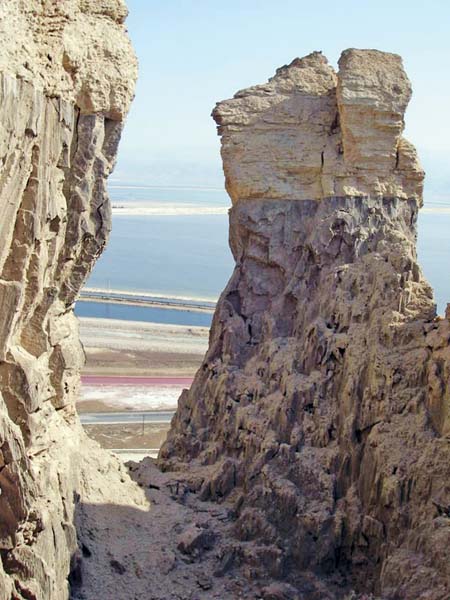Image Details

Amos Frumkin
Amos Frumkin found that the pillar called Lot’s Wife did not form as a result of direct erosion as most believe, but was rather once the eastern wall of a cave located near the top of Mt. Sedom. The erosive streams of water that created the cave formed an outlet in this eastern wall (seen as the open channel beside the pillar) that then allowed water to flow freely down the side of the mountain. Over time, more and more stream water flowed by and through the wall, leaving only a narrow column of salt to support the cave’s caprock ceiling. Finally, under stress of an earthquake that may have reached 8.0 on the Richter scale, the cave’s roof collapsed. All that remained of the cave was an empty, unroofed void and a withered remnant of its eastern wall, now appearing as a towering pillar of salt high up the mountain slope.
Based on carbon-14 dates obtained from pieces of wood that had flowed into the cave during its lifetime, Frumkin found that the cave collapsed about 2000 B.C.E. Studies of ancient seismic activity in the Dead Sea region revealed that a series of devastating earthquakes shook the area in the 21st century B.C.E., the most powerful occurring around 2050 B.C.E. Frumkin believes it was this quake that could have created the pillar of Lot’s Wife and that may have given rise to the Biblical traditions of Sodom’s destruction.
